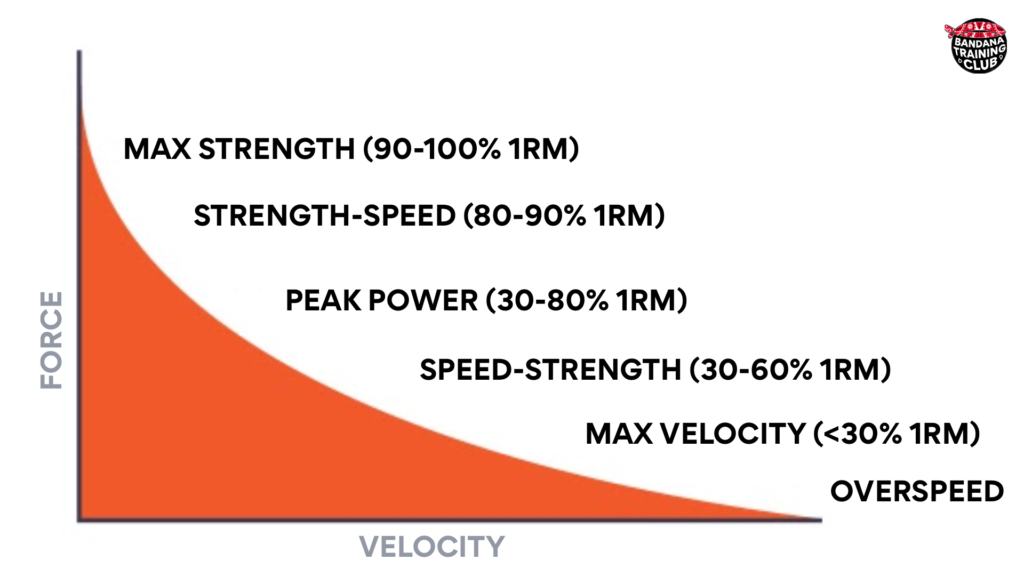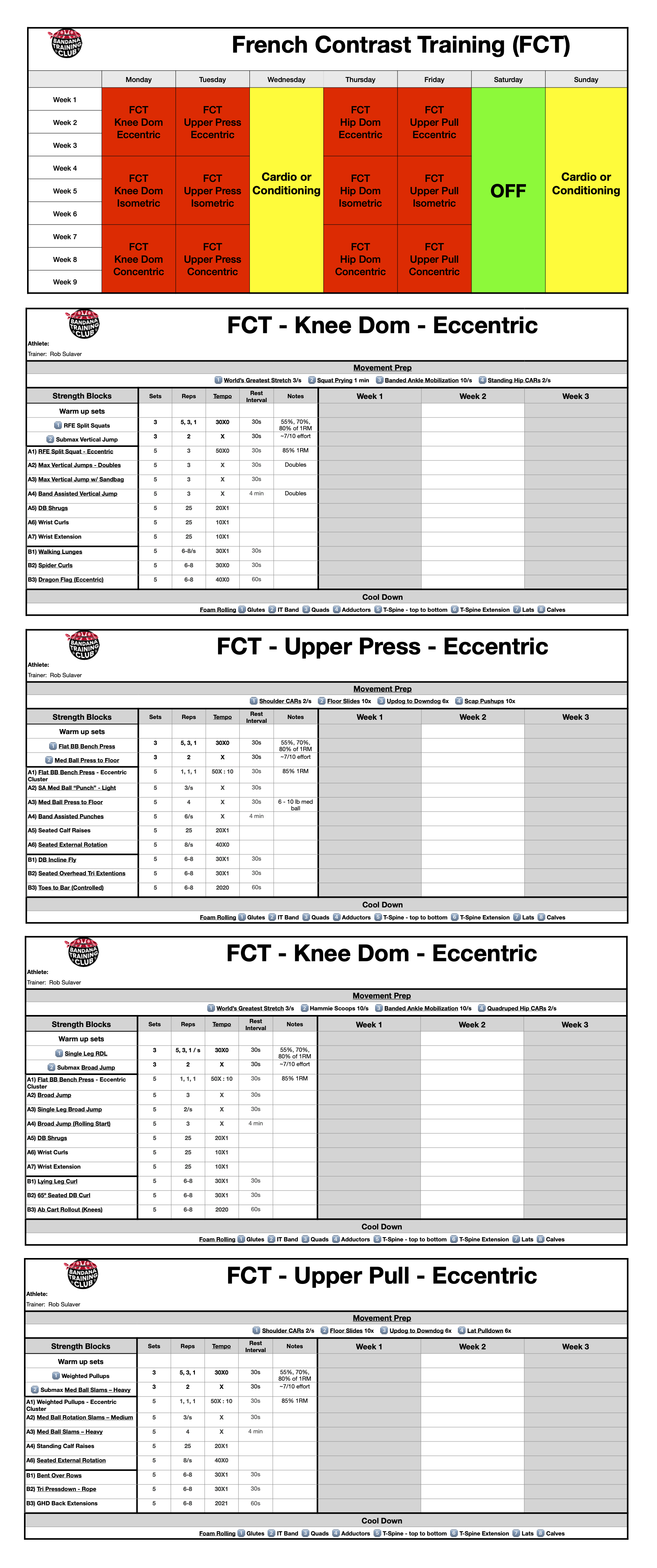The Need-to-Knows
Goal: To improve your rate of force development by applying the principles of French Contrast Training using equipment that is available in most commercial training spaces.
Necessary Equipment: Barbell, Dumbbells, Bench, Rack, Pullup Bar, Bands, Medicine Balls, Wall, GHD.
Workout per week: 4 – Knee Dom, Upper Press, Hip Dom, Upper Pull.
Gym Membership Required? Probably
Length: 9 weeks. The first phase is included below but as you will see this program includes a lot of nuance, so I would suggest working with a qualified S&C coach if you’re going to complete the entire program.
The Good-to-Knows
This program is based on the principles of French Contrast Training (FCT) which was originally developed by former French track and field coach Gilles Cometti and made popular by Head University of Minnesota Olympic Strength Coach Cal Dietz in his seminal book Triphasic Training.
In simple terms, FCT is a combination of complex and contrast training. Complex training is a heavy compound lift (>80%+ of 1RM) paired with a plyometric utilizing a similar motor pattern. Contrast training is a max or near max compound lift paired with a “back-off” lift (50-70% of 1RM) utilizing a similar motor pattern.
Here is the training sequence for an FCT block:
A1) Heavy Compound Lift
A2) Plyometric Jump
A3) Drop Set or Weighted Jump
A4) Accelerated Plyometric
To put this into exercise specific terms:
A1) Back Squat (>80% of 1RM)
A2) Hurdle Jump
A3) Trap Bar Jump (~30% of 1RM)
A4) Band Assisted Vertical Jump
This would be followed by a 4 minutes rest. Because this type of training is incredibly taxing, your nervous system will need time to recover between sets. However, as we all well know, our training time is precious and should always be utilized for the athletes’ benefit. I’d recommend using this recovery time for pre-habilitation exercises or other options that don’t add additional fatigue to these movements.
FCT utilized the principles of Post Activation Potentiation (PAP) which is a short-term improvement in explosive performance for something like a vertical jump when it’s followed by a heavy-load or high-threshold lift such as a back squat. PAP has been shown to improve jumping, sprinting, throwing, kicking, and change of direction.
Strength vs. Speed
The benefits of FCT make perfect sense when analyzed through the lens of the force-velocity curve. From our example above, the back squat is close to a max force exercise. The non-weighted and weighted plyometrics will both be speed-strength exercises but the weighted plyometrics will demand greater force while the non-weighted plyometrics will elicit higher velocity. The Band Assisted Jump is a super compensated velocity exercise. By hitting a milemarker at various sections of the force-velocity curve, FCT is quite literally training strength to be explosive. The 4 exercise circuit also allows for more stress to be placed on the athlete compared to complex or contrast training alone.

Science vs. Art
Understanding the science is always critical, but exercise selection and choosing patters specific to the sport is where constructing FCT blocks can become an art form. FCT was originally developed for track and field athletes, but these principles can and should be adapted for various sports. If working with sprinters, exercises should carry over to the mechanics of running. If working with rotational dominant athlete such as golfer or baseball player, we would spend more time in the transverse plane. The training program outlined below would be most appropriate for wrestlers, combat athletes, or anyone who requires explosive movement in a variety of patterns, which also makes it a nice sample-platter of the ways in which these principles can be adopted for various athletes. I also deliberately chose exercises that require as little additional equipment as possible, to make the program accessible to anyone with traditional gym equipment.
Sport specific training is not a weighted version of the sport. It’s training the athletic qualities necessary to succeed at the sport.
A few additional notes:
- This is a 9 week program and brings together a variety of training concepts including French Contrast Training, Triphasic Training, and Cluster Training. Weeks 1-3 have an eccentric emphasis which is outlined in the training tables below. Weeks 4-6 have an isometric emphasis. Week 7-9 have a concentric emphasis. Please know that tempo changes as your progress through the program and the demo videos are often done at a normal tempo which may not be the tempo prescribed. If you’re not familiar with tempo prescriptions, here’s a solid resource:
- Finish every rep with a maximum concentric contraction. This should be obvious for the concentric phase, but is important to remember for the eccentric and isometric phase as well.
- This program includes 4 days per week of strength training – a squat day, upper press, hinge, and upper pull day. Depending on your goals and work capacity, you could add some cardio or conditioning on Wed and Sun. Because the training volume of this program is relatively high, I would not consider it appropriate for in-season training.
- The upper body block utilities clusters training. If you see a tempo with a : that means you rack the weight (or drop off the bar in the case of pullups.) So 50X : 10 means a 5 second eccentric, 0 second pause after the eccentric, an explosive concentric, and then you rack the weight (or drop off the bar) for a 10 count before starting the next rep. Cluster training is one of the best ways to get strong AF.


